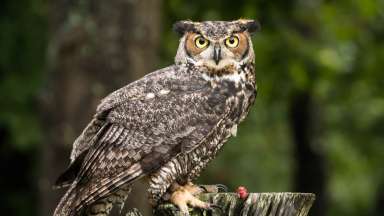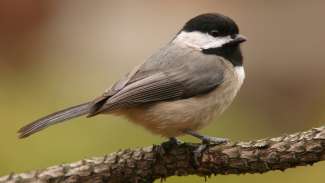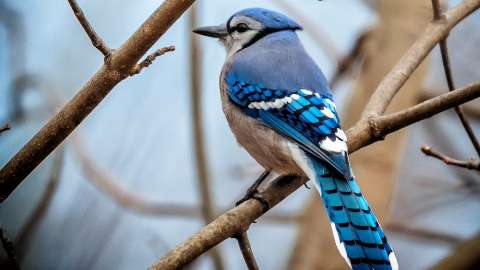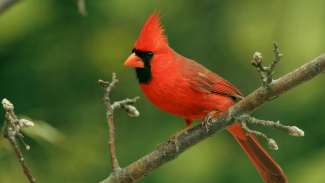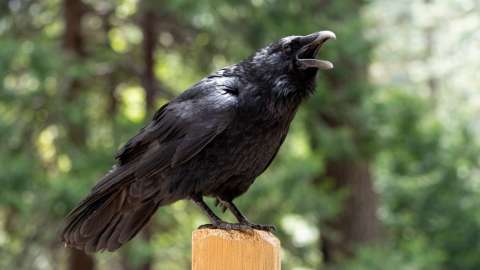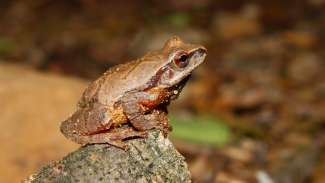One of the great parts of summer in North Carolina are all the animals that are active day and night, often singing. If you step outside on a quiet morning or an early evening and spend few minutes listening to the sounds of nature you will likely hear a dozen or more different creatures going about their day. The next time you go for a walk near your home or at a local park you may be surprised at all the different non-human sounds around you. If you’re anything like me, you may start to wonder just who or what is making these sounds. Once you start to focus on the different sounds of nature all around you, it becomes easier to learn who is making what sounds. Almost like recognizing the voices of friends or family, your brain will start to recognize the new connections in nature!
One way that people can learn who is making what noise is by putting words to the sounds. This technique is called mnemonics (neh-mon-ics), which is a memory tool that often helps people recognize information. Mnemonics is one of the most popular ways for starting to learn bird songs. Bird songs often have mnemonics, more so than other species, because their songs are lyrical like human speech and music. The great thing about mnemonics is that you can make up the phrases that help you the most. There are no rules to what works for you to be able to remember things. If there is already a mnemonic that exists which helps you to learn a bird song, great!
Because North Carolina is home to hundreds of species of birds, its important to start small when learning new songs. Don’t try to learn all the birds at once. A good idea is to start with the most common birds that are in the area year-round such as birds that visit your local parks or backyard bird feeders. While you’re practicing at home you can easily search online for a video or a sound clip of a common bird singing.
To help you all get started, here is a list birds common to this area, and the mnemonic phrase for their songs:
- American Crow- “Caw-caw-caw”
- Blue Jay- “Jay- jay- jay”
- American Goldfinch- (while flying, in an up-and-down dipping song) “po-ta-to-chip”
- Great Horned Owl- “Who’s Awake? Me too”
- Carolina Chickadee- “chk-a-dee-dee-dee”
- Northern Cardinal- “Cheer- cheer-cheer-purty-purty-purty”
- Eastern Towhee- “drink your teeeeee! too whee!”
Birds aren’t the only animals making noise outside during the summer, however. Frogs, toads, and insects also take advantage of the warm weather and are easily heard day and night across North Carolina. These animals have songs that are harder to remember with phrases like we use for bird songs. A different approach to learning the calls for these critters is to compare the sounds to common everyday objects. Green frogs often sing on warm humid days in the summer, their songs sound like a loose banjo string being plucked. Northern leopard frogs have a song that sounds like two balloons being rubbed together. When the weather first starts warming up in the springtime other frogs can be heard, such as the spring peeper, which has a call that sounds like the frog is calling its name “peep-er, peep-er, peep-er” in a high pitched song.
The next time you step outside in the summer, tune into who else may be around you. Not by sight this time, but by sound. The world around us is singing, and summer is a great time to listen, and maybe learn a song or two.
